Exploring the Lokma Recipe: A UAE Culinary Delight
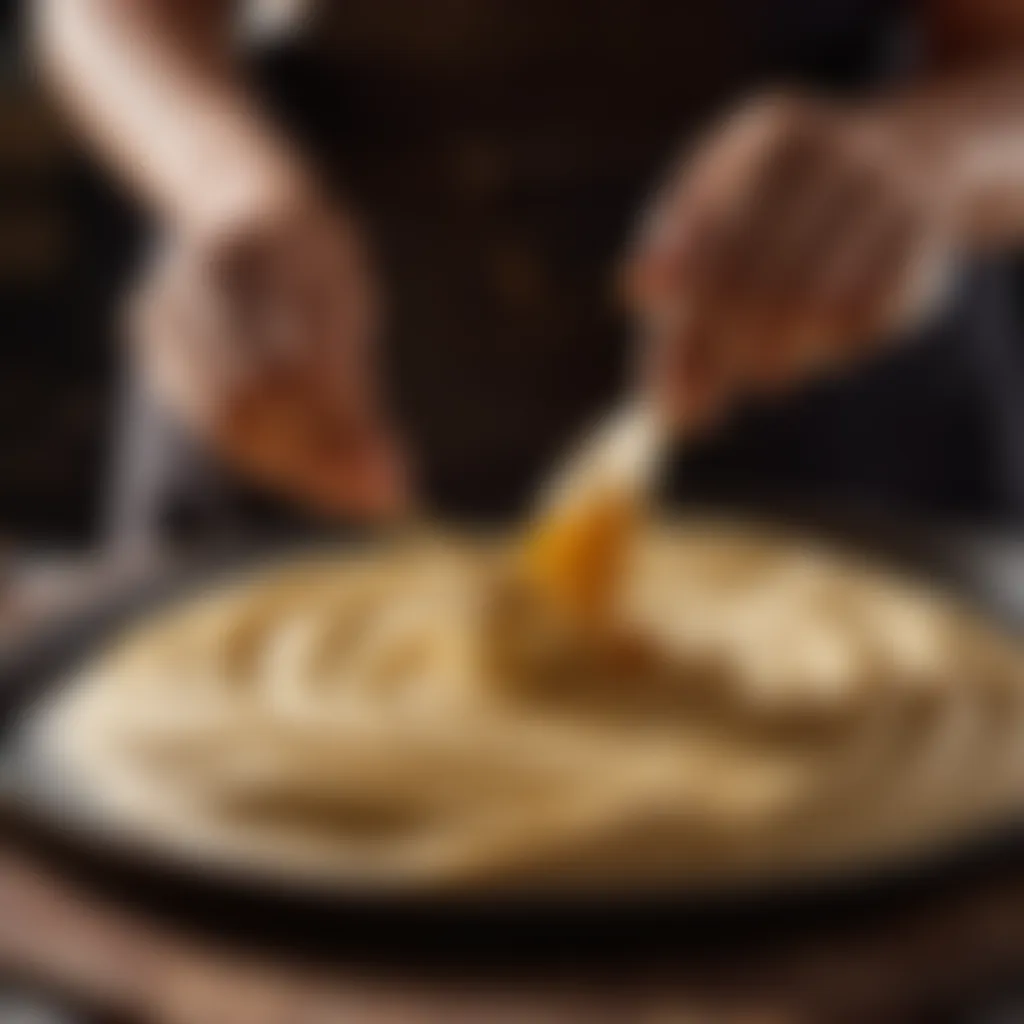
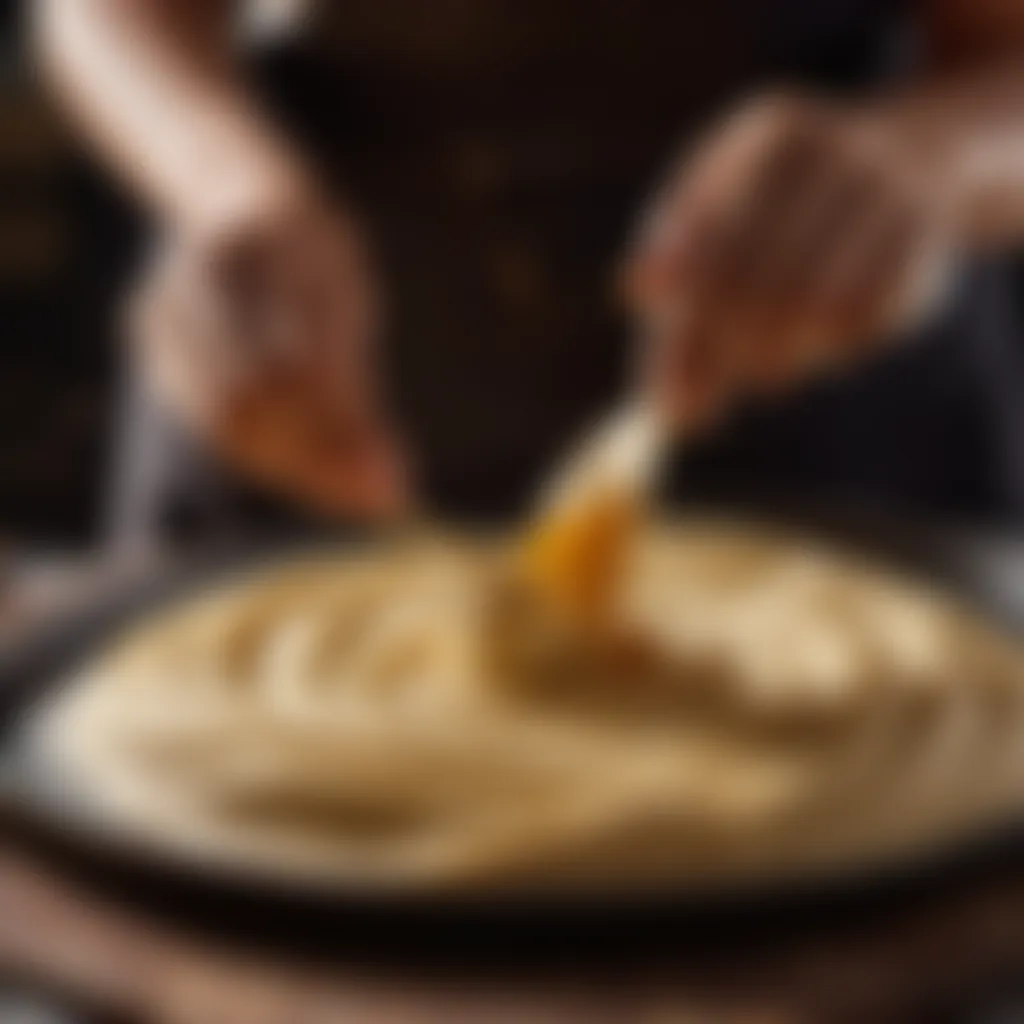
Intro
In the realm of desserts, few treats encapsulate the spirit of a culture quite like Lokma does in the UAE. This delicacy, often made for celebrations and social gatherings, carries with it traditions that have been passed down through generations. The sweet, airy morsels are not just a dessert; they are a cultural artifact, reflecting the values, customs, and flavors unique to the Emirati lifestyle.
The journey from mixing ingredients to enjoying freshly made Lokma is both satisfying and fragrant. Let’s explore the process of making this exquisite dessert, delving into its ingredients, preparation methods, and the techniques that elevate it above other sweet treats.
By the end of this guide, you will not only know how to create Lokma but also appreciate its significance in the culinary landscape of the UAE.
Ingredients:
To embark on your Lokma-making adventure, you'll need a selection of key ingredients that result in that perfect balance of texture and flavor. Here’s what you’ll need:
- 1 cup all-purpose flour
- 1 tablespoon yeast
- 1 tablespoon sugar
- 1/2 teaspoon salt
- 1/2 cup warm water
- 1/4 cup yogurt
- 2 tablespoons ghee or vegetable oil
- Oil for frying
- 1 cup sugar (for syrup)
- 1/2 cup water (for syrup)
- 1 teaspoon rose water or orange blossom water (optional)
With these ingredients in hand, you're all set to start the process.
Preparation Steps:
Step-by-Step Instructions:
- Activate the yeast: In a small bowl, combine the warm water with the yeast and sugar. Let it sit for about 10 minutes until it becomes frothy, indicating that the yeast is active.
- Mix the dry ingredients: In a large mixing bowl, whisk together the flour and salt.
- Combine: Create a well in the center of the flour mixture, then add the yeast mixture, yogurt, and ghee or vegetable oil. Stir until it forms a dough.
- Kneading: Transfer the dough onto a lightly floured surface and knead for about 10 minutes until it’s smooth and elastic.
- First rise: Place the dough in a greased bowl, cover with a damp cloth or plastic wrap, and let it rise in a warm place until it doubles in size, about 1 to 1.5 hours.
Technical Aspects:
Temperature Settings and Timing:
- Frying Temperature: Heat oil in a deep saucepan or fryer to about 350°F (175°C). It's essential that the oil is hot enough to create crispy surfaces while allowing the inside to cook properly.
- Syrup Timing: While the Lokma are rising, prepare your syrup. Combine sugar and water in a saucepan, bring to a boil, then reduce heat and simmer for 10 minutes. Add rose or orange blossom water if desired.
Cooking Process:
Sequential Steps:
- Once the dough has risen, punch it down and allow it to rest for another 15 minutes.
- Forming Lokma: Using a spoon or your hands, drop small amounts of dough into the hot oil, shaping them into round balls. Don’t overcrowd the pan; fry in batches.
- Fry until golden: Let them fry for about 3-4 minutes on one side before flipping. They should achieve a beautiful golden color and puffed appearance.
- Draining and coating: Remove the Lokma from the oil using a slotted spoon and let them drain on paper towels before dipping them into the syrup.
Remember: A well-prepared syrup adds moisture and flavor to Lokma, making it irresistible.
Troubleshooting Tips:
- If your Lokma are dense, check the yeast’s freshness and ensure that your dough has risen adequately.
- Frying at too low a temperature can absorb too much oil, making them greasy; adjust your heat accordingly.
- For a more even fry, gently turn the Lokma as they cook.
With these steps laid out clearly, you’ll soon find yourself effortlessly creating Lokma that will impress friends and family alike. Enjoying this special treat is not just about flavors; it’s a direct connection to the rich heritage of Emirati cuisine.
Prolusion to Lokma
Lokma is not just a dessert; it's a piece of culture, filled with shared moments and flavors that tell a rich story in the context of the UAE. Understanding Lokma is essential for anyone looking to explore Emirati cuisine, as this delightful treat embodies the gastronomic identity of the nation.
At its core, Lokma is a type of deep-fried dough, often soaked in syrup, that captivates the senses through its texture and taste. But the significance of Lokma stretches beyond just being a sweet indulgence. It reflects a blend of influences, traditions, and a communal spirit that resonate with both locals and visitors alike.
Defining Lokma
Lokma, in its simplest form, can be defined as small, round pastries made from a yeast-leavened dough. These bites are deep-fried until they achieve a golden, crisp exterior while remaining soft and fluffy on the inside. The treat is typically drizzled in a fragrant syrup, often flavored with rose or orange blossom, creating a delightful contrast between the warm pastries and the sweet syrup.
The name “Lokma” is derived from Arabic, translating to “bite” which emphasizes the small size and the way each piece is enjoyed in a single mouthful. It's not uncommon to find Lokma served alongside coffee or tea, making it a beloved snack during gatherings or a sweet finish to a meal.
Cultural Context in the UAE
In the UAE, Lokma holds a revered place during festive occasions and family gatherings. This dessert is more than just a treat; it symbolizes hospitality and generosity. Often prepared during celebrations such as Eid or weddings, it embodies the spirit of sharing and togetherness that defines Emirati culture.
The process of making Lokma can be a communal activity, bringing family members together in the kitchen. Grandmothers often pass down their unique recipes to younger generations, ensuring that the heritage remains alive, both in taste and tradition.
"Lakoma is more than a treat; it’s a testament to our heritage and the way we connect with each other over food."
As you delve deeper into this culinary journey, you'll uncover layers of meaning that make Lokma a quintessential dessert in the UAE. Understanding these cultural nuances enhances the experience of preparing and enjoying Lokma, adding depth to what might otherwise appear to be just a delicious pastry.

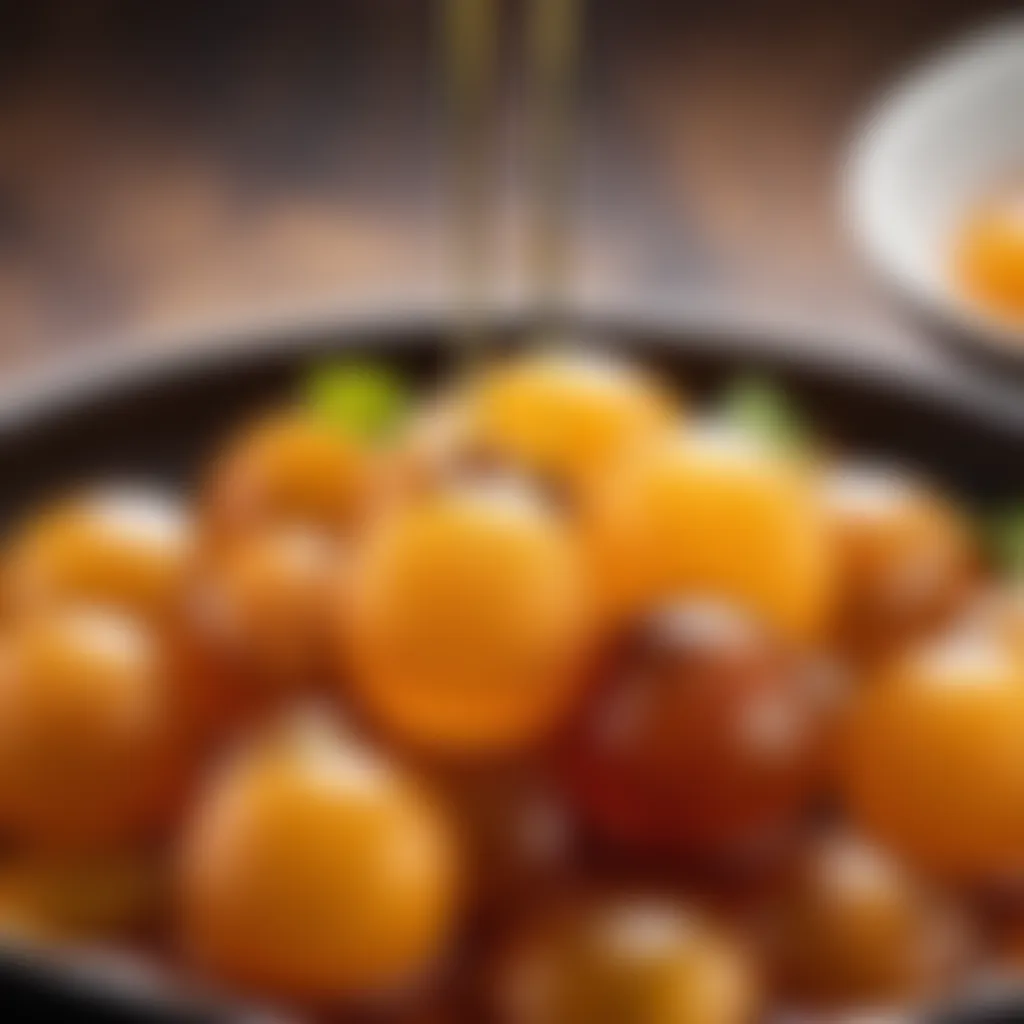
Historical Roots of Lokma
The exploration of Lokma's historical roots reveals not just the dish’s culinary significance but also its deep cultural tapestry woven through generations. Understanding how Lokma has transformed over the years gives insight into the broader spectrum of Emirati culinary traditions. The journey of this dessert mirrors the history of the UAE itself, showcasing how food acts as a bridge linking past to present.
Ancient Beginnings
Lokma, often described as crispy fried dough balls drenched in sweet syrup, finds its earliest traces in Middle Eastern civilizations. Ancient Arab culture embraced the concept of frying dough, using simple ingredients like flour and water. Historical texts suggest that these delectable bites were enjoyed during various festivals and gatherings, punctuating life's joyous moments with sweetness.
As trade routes opened in the region, spices and cooking techniques were exchanged, influencing local gastronomy. The use of sugar syrup, with its delicate balance of sweetness, likely emerged during this time, elevating dough balls into what would eventually become the Lokma we cherish today. This dish, in its infancy, was not just food; it held the essence of hospitality and celebration.
"In the world of culinary art, every dish whispers stories of its past, and Lokma is no exception."
Evolution Through Centuries
As centuries rolled on, Lokma adapted to changing tastes and cultures. The Ottoman Empire played a pivotal role in spreading versions of Lokma across its vast territories. Each region contributed unique twists; however, in the UAE, it became synonymous with traditional Emirati hospitality.
One notable shift in Lokma’s story is the introduction of modern ingredients and cooking methods. While the core remains consistent, many Emirati households now incorporate saffron or rosewater into the syrup, giving the dessert a fragrant touch that enhances its allure. Also, the popularity of Lokma has led to its presence in street food markets and upscale restaurants alike, signifying its importance in both ancient and contemporary culinary practices.
The flavor profile of Lokma reflects the multicultural landscape of the UAE, where influences from Indian and Persian cuisines meld effortlessly. This adaptation is a testament to the resilience and creativity of local cooks who ensure that, despite modernization and globalization, the essence of Lokma continues to flourish.
In summary, the historical roots of Lokma not only tell a tale of culinary evolution but also symbolize the cultural identity of the UAE. Each bite speaks of time-honored traditions, bridging generations and highlighting the dish’s enduring significance in Emirati celebrations.
Key Ingredients
When it comes to creating the perfect lokma, understanding its key ingredients is paramount. These components not only provide the structure and texture of this beloved dessert, but they also impart a distinctive flavor. Each ingredient has its role, transforming basic elements into a culinary masterpiece.
Main Components
At the heart of every lokma are a few fundamental ingredients. Flour is the mainstay, providing the base for the dough. All-purpose flour is typically chosen for its gluten content, resulting in the delightful chewy texture that is synonymous with this dessert.
Yeast is another essential element. It helps the dough rise, leading to that airy, fluffy inside. Usually, active dry yeast is used, as it’s easily available and yields dependable results. Then you have sugar—not just for sweetness but also critical for fermentation. If you skip on the sugar, you miss out on creating that mouthwatering flavor that makes you reach for a second piece.
Milk or water is also included, depending on the recipe. Milk can add richness and a hint of sweetness, while water may yield a lighter texture. Lastly, eggs often come into play in some recipes, adding moisture and binding properties.
Flavor Enhancers
While the core ingredients lay the groundwork, flavor enhancers elevate lokma to extraordinary levels. The simplest one is vanilla extract. Just a teaspoon can infuse the dough with a warm, inviting aroma that dances on your palate.
Rose water or orange blossom water is often used, particularly in the UAE, tapping into the region’s love for floral notes. These additions give lokma an aromatic quality that makes it more than just a sweet treat—it becomes an experience.
Moreover, the syrup that soaks into the fried lokma is also critical. Traditionally, this syrup is made from sugar, water, and sometimes includes a hint of lemon juice or cardamom for that extra depth. The balance of sweetness and acidity makes the lokma radiate flavor, ensuring every bite is an utter delight.
"The beauty of lokma is in its simplicity—but don’t underestimate the power of a few well-chosen flavor enhancers. They can make or break the dish!"
In essence, these ingredients are the building blocks of lokma. Each one plays a significant role, not only in creating a delicious dessert but also in enriching the culinary heritage of the UAE. Understanding these essentials can transform anyone from a novice to a seasoned home cook, ready to impress friends and family with authentic Emirati flavors.
Preparation Method
The preparation method of lokma is a fundamental step that can make or break this delectable dessert. Crafting lokma from scratch allows the cook not only to engage with the rich cultural traditions of the UAE but also to control each aspect of flavor and texture. This section highlights the detailed processes involved in creating this delightful dish, covering the essential techniques for dough preparation, frying, and serving.
Dough Preparation
Creating the perfect lokma starts with the dough preparation. This step is crucial as it lays the foundation for the lokma's texture and taste. The dough typically combines flour, yeast, sugar, and water, with potassium carbonate often added for a unique lightness. The mixing process should be gentle, allowing air to incorporate, which is vital for fluffy lokma.
Once the ingredients are combined, the dough needs to be kneaded until smooth, then left to rise in a warm environment. This fermentation period not only allows the dough to puff up but also contributes to the complex flavors. Ideally, the dough should double in size, which takes about an hour. Patience here is key; skipping this stage could result in dense and disappointing results.
In traditional practice, some Emirati cooks swear by using a little yogurt in the dough, adding a subtle tang that enhances the flavor profile of finished lokma. The texture should be soft and slightly tacky, making it easy to work with.
Frying Techniques
Frying is perhaps the most critical phase of lokma preparation. This is where the dough transforms into the lovely, golden treats beloved throughout the region. Two essential considerations stand out: temperature control and oil selection.
Temperature Control
Temperature control during frying is vital for the perfect lokma. If the oil is too hot, the exterior may fry too quickly, leading to a burned outside and raw inside. Conversely, if it’s too cool, the dough will absorb excess oil, becoming greasy instead of golden.


Maintain your oil at around 180°C (356°F) for best results. This specific temperature ensures an even fry, achieving that golden exterior while keeping the inside light and airy. Using a thermometer can be particularly helpful to monitor the oil’s heat accurately. Moreover, adding a small piece of dough and observing how it reacts can give a clear signal of whether the oil is ready.
"A well-controlled approach to frying is the secret behind those puffy and airy lokma that everyone loves."
Oil Selection
Choosing the right oil is equally important in the lokma frying process. Many people opt for vegetable oil due to its neutral flavor and high smoke point, which is excellent for frying.
Peanut oil, on the other hand, is also a favorite in some Emirati kitchens as it can add a subtle richness to the fried dough. Refined oils are preferable since they can withstand higher temperatures without burning.
However, it’s essential to keep the frying oil clean by straining it after use and not mixing different types of oil, which could alter the flavor of the lokma.
Serving Suggestions
Once the lokma is perfectly fried and golden brown, serving suggestions can elevate the experience. In the UAE, it’s common to drizzle the lokma with rose water syrup or sprinkle them with powdered sugar for a delightful sweetness.
Some families enjoy serving lokma dipped in honey or syrup infused with cardamom for a fragrant touch that pairs wonderfully with the dough. Presentation matters as well, so consider arranging the lokma on a beautiful platter, perhaps garnished with crushed nuts or coconut flakes to add texture.
Here are some ideas for serving:
- Drizzle syrup right before serving.
- Serve with a side of cardamom tea for a traditional experience.
- Dust with gold leaf for a festive touch on special occasions.
Engaging with these preparation methods not only results in delicious lokma but also steeps the cook in Emirati culinary traditions, enhancing every bite with a rich history.
Regional Variations
Exploring regional variations is crucial to understanding the full essence of lokma. Each area adapts this beloved dessert to reflect local taste preferences, ingredient availability, and cultural influences. Regional differences can breathe new life into lokma, offering surprises even to those who think they know this dish well. Different techniques and ingredients can not only enrich the flavor but also impact the texture and presentation, making each version a unique culinary experience.
Local Twists in the UAE
In the UAE, lokma isn't just a standard sweet treat; it's a canvas for creativity. For example, some Emirati families prefer to infuse their lokma with saffron or rose water. These additions enhance the flavor profile, adding depth and a touch of luxury that’s perfect for festive gatherings.
Another common twist is the incorporation of local nuts like pistachios or almonds into the coating sugar, offering a crunch that contrasts beautifully with the soft, fluffy interior of the lokma. Additionally, some vendors sell lokma drizzled with date syrup instead of the traditional honey, giving it a distinctive sweetness that speaks to the region's rich date cultivation history. This local adaptation not only pays tribute to the homegrown ingredients but also connects the dish to Emirati heritage.
"A bite of lokma dressed in saffron and date syrup can transport you to the heart of Emirati culture, where every ingredient tells a story."
When you stroll through the bustling streets during celebrations, you'll find food stalls offering their take on lokma, showcasing their artisan approach. People often engage in friendly rivalry, passionately discussing whose family recipe reigns supreme, highlighting how personal and communal ownership of the dish enriches it even further.
Comparative Analysis with Other Countries
Beyond the UAE, lokma shares its lineage with several other cultures, each with its distinctive charm. Notably, in Turkey, a similar confection called lokma tatlısı is often served at religious events and communal gatherings. Turkish lokma tends to be smaller and is often dipped in syrup after frying, resulting in a delightful yet lighter finish. Contrary to the rich texture of Emirati lokma, the Turkish version may present as less indulgent but offers its own unique satisfaction.
In Greece, loukoum closely resembles lokma but is often flavored with orange or cinnamon. The syrup is also thicker, providing a different mouthfeel that contrasts with the fluffiness of the Arabian variant. Each cultural appropriation of lokma not only emphasizes local tastes but also showcases the adaptability of a simple dough ball, transforming it into an integral part of various cultural narratives.
Through these lenses, it becomes evident that lokma’s journey is not confined to the UAE alone but is a shared story, woven with threads from different regions. The exploration of these regional variations fosters a deeper appreciation of lokma not just as a dessert, but as a symbol of community and heritage, highlighting how food connects us all.
Culinary Significance
The culinary significance of certain dishes often extends far beyond mere sustenance; it serves to bind communities, preserve heritage, and enhance the cultural fabric of a nation. In the realm of Emirati cuisine, Lokma stands out not just as a dessert but as a symbol of togetherness and tradition. Understanding the role Lokma plays within Emirati celebrations provides a window into the country's rich customs and shared values.
Role in Emirati Celebrations
When it comes to festivities in the UAE, Lokma is frequently at the center of shared moments. Whether it’s a wedding, a holiday, or a local gathering, this sweet treat finds its way onto tables, delighting both young and old. The act of preparing Lokma often involves family and friends, making the cooking process a communal activity that fosters connection.
Consider these celebrations:
- Eid al-Fitr: Following a month of fasting, the feast is traditionally vibrant, and Lokma fills the air with its enticing aroma. It symbolizes the joy of breaking bread together.
- Weddings: At many Emirati weddings, guests often enjoy Lokma alongside other traditional dishes, emphasizing hospitality and abundance.
- Festivals: During events like the Dubai Food Festival or local market days, Lokma is a staple that reflects the vibrant culinary scene while keeping tradition alive.
"Food is our common ground, a universal experience." – James Beard
Thus, Lokma does more than tantalize the taste buds; it participates in the creation of cherished memories and strengthens bonds among people.
Symbolism and Heritage
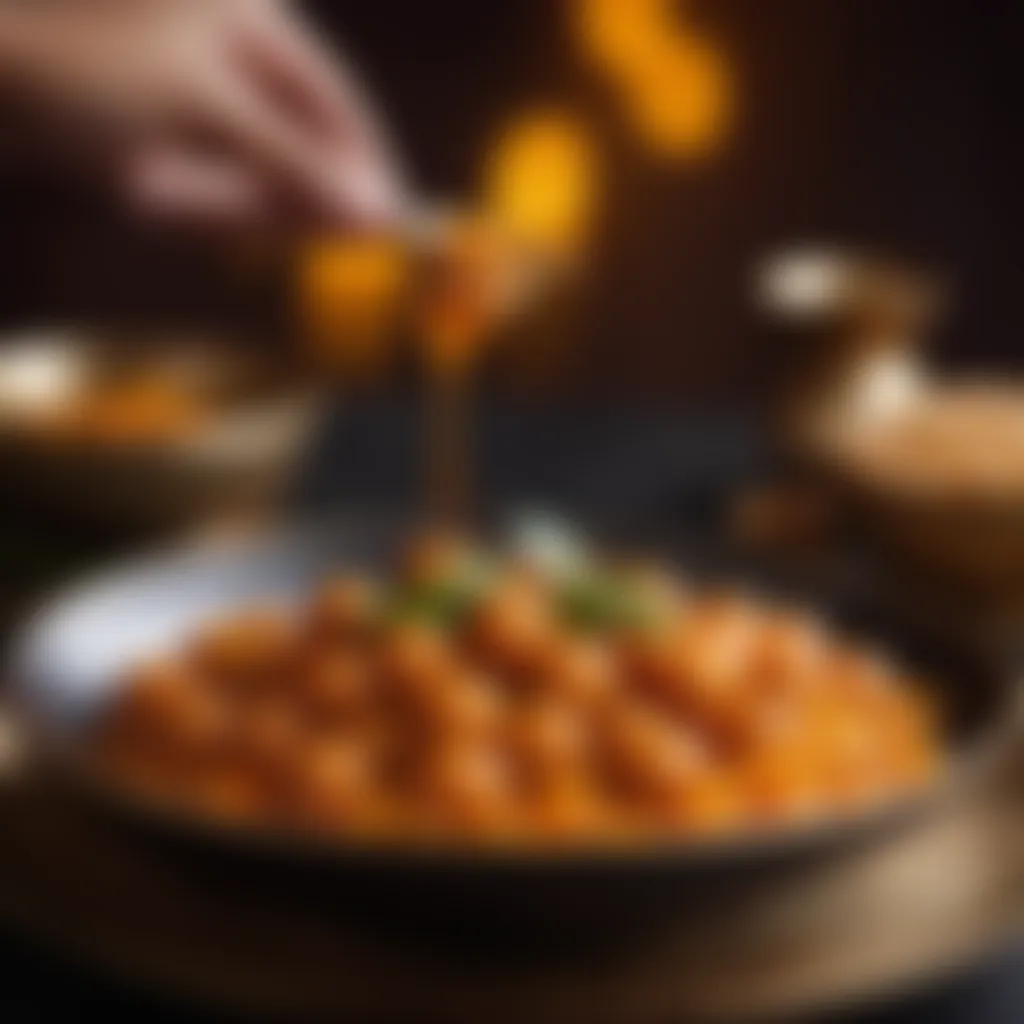
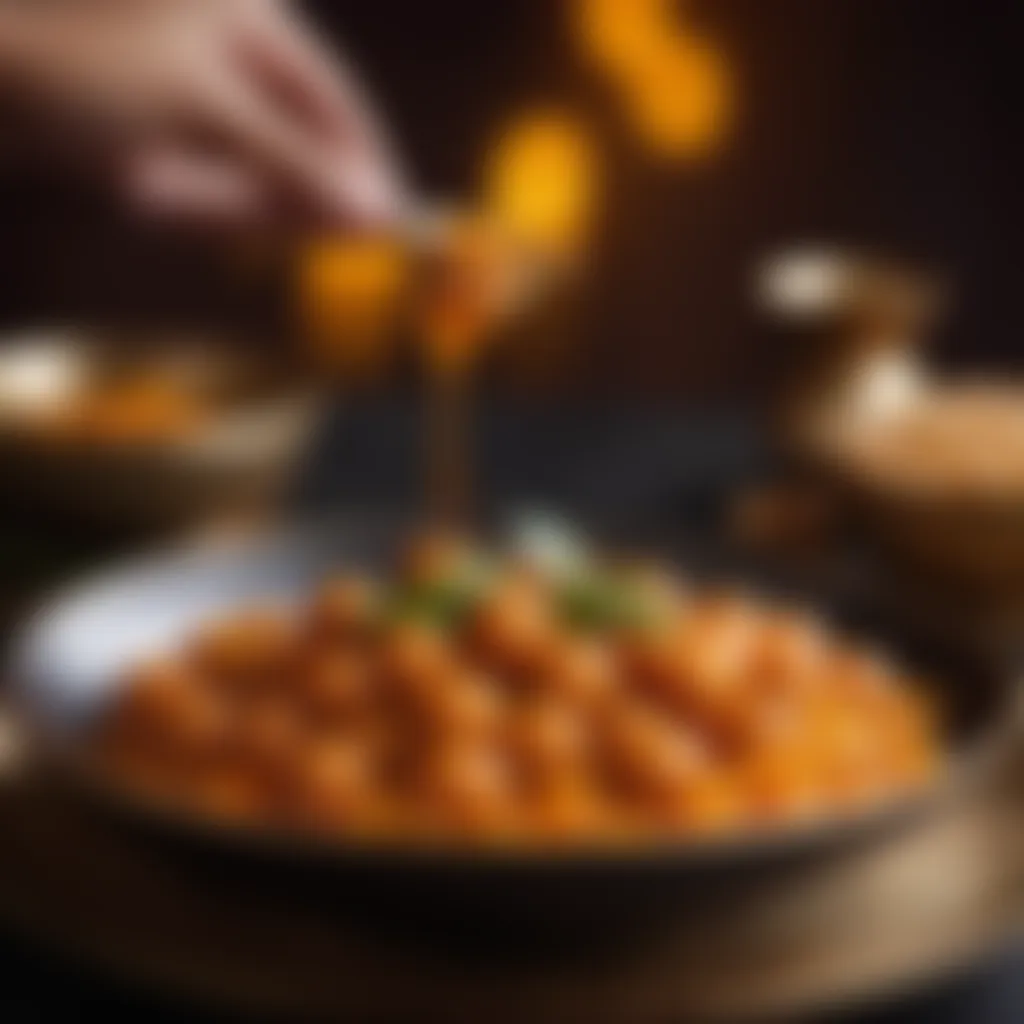
Lokma embodies more than just flavor; it represents a piece of the Emirati identity. Its circular shape can symbolize unity and continuity, echoing the values deeply embedded in the local culture. When people share Lokma, they share stories, laughter, and the legacy of their ancestors.
The significance of Lokma doesn't end at social gatherings. Its preparation methods, often passed down through generations, connect the younger generations with the skills and traditions of their forebearers. Families frequently gather to make Lokma together, creating a sense of belonging and reverence for their culinary heritage.
In recent years, the word about Lokma has spread, not just within the UAE but globally. However, it remains closely tied to Emirati culture, reflecting a history of hospitality and resilience.
In summary, Lokma's role in celebrations and its deep-seated symbolism highlight its culinary and cultural significance, showcasing a vibrant mix of flavors that are as rich as the stories behind them.
Personal Stories and Anecdotes
Personal stories and anecdotes surrounding the preparation and enjoyment of Lokma transcend mere culinary practices; they encapsulate family traditions and heartfelt memories. In Emirati culture, sharing food is an expression of love and unity, and Lokma symbolizes this beautifully. Each twist and turn in the dough tells a story, while the sweet, syrup-soaked bites evoke companionship and warmth. The beauty of Lokma lies not just in its taste, but in the communal experiences it fosters, highlighting the significance of these personal tales within the wider fabric of Emirati culture.
Grandmothers’ Recipes
In many households, grandmothers hold the keys to culinary heritage, their recipes being passed down through generations like prized heirlooms. When it comes to Lokma, a grandmother's recipe often represents not just ingredients, but a wealth of knowledge and experience.
It is common for these recipes to be a fusion of classic techniques and personal tweaks, tailored over the years to acclaim favorite flavors and textures. The unique approach of a grandmother can be a result of her own upbringing, influenced by the region's rich tapestry of cultural exchanges. The warmth of the kitchen on a Sunday morning fills with the aroma of yeast, oil, and sugar as she crafts these little delights. Her hands, seasoned by time, knead the dough with care, almost as if infused with memories of previous gatherings where family and friends sat around a table, savoring each bite together.
To many, these recipes are more than just a culinary guide; they represent a ritual. Never is it just about the ingredients but about the act of creating something meant to be shared. A grandmother’s recipe for Lokma transcends the personal—it opens doors to stories of laughter, joyous celebrations, and perhaps even some tears. As family members gather, each one is wrapped in their own nostalgic reverie, reminiscing about past gatherings made sweeter by sticky fingers and the laughter that fills the air.
Community Gatherings
Community gatherings in the UAE are rich with traditions, and the presence of Lokma is often pivotal. Whether at weddings, festive holidays, or simple weekend get-togethers, the dish finds its way into social interaction, acting as a symbol of hospitality.
At these gatherings, Lokma is more than just a dessert; it is a communal experience. People come together, eager to share the process of making these delightful morsels, each person contributing their twist—be it a dash of cardamom or a sprinkle of pistachios. It’s a time of connection, laughter, and learning, where generations collide, exchanging tips and memories. The ritual of preparing Lokma becomes almost like a dance, where each participant embraces their role, from frying to coating the finished product in syrup.
"Lokma is the sweet thread that binds us. It's as much about the food as it is about who we share it with."
When served, Lokma does more than satiate hunger; it ignites conversations and rekindles relationships. Its syrupy sweetness mirrors the joy felt by everyone present, encapsulating the essence of community. It becomes an offering of love, carried from home to home, inviting friends and family to indulge and soak in the joy of togetherness.
In these gatherings, the act of sharing Lokma often leads to stories being shared—of triumphs, lessons learned, and dreams for tomorrow. These moments of connection are irreplaceable, turning simple gatherings into lasting memories, with Lokma at the heart of it all.
Contemporary Trends
In recent years, Lokma has seen a fresh wave of innovation in the culinary landscape of the UAE. Traditional sweets are often getting a makeover, and Lokma is no exception. This section explores how modern takes on the recipe and the infusions from various cuisines are shaping its presence in today’s food scene.
Modern Takes on Traditional Recipes
With a growing emphasis on healthy eating, many chefs and home cooks are experimenting with ingredients in a bid to create a more nutritious version of Lokma. Some substitutes, like using whole wheat flour instead of all-purpose flour, not only retain the essence of the dessert but uplift its nutritional profile. This alteration allows the treat to appeal to health-conscious consumers while preserving its iconic taste and texture.
Additionally, flavor profiles are broadening beyond the classic honey syrup. Nowadays, you might find Lokma dressed in rose water syrup, offering a fragrant twist that intrigues the palate. Other variations incorporate flavors like cardamom and pistachio, integrating local ingredient influences.
In the hands of the inventive cook, the frying process itself has evolved too. Air frying, for instance, presents a revolutionary approach to enjoy Lokma without deep frying, allowing the dessert to take on vibrant textures with less oil. It showcases how traditional desserts can adapt without losing their charm.
Fusion Cuisine Influences
The culinary world thrives on blending cultures, and here’s where fusion cuisine plays a critical role. A growing number of food enthusiasts are introducing flavors from other cuisines into the Lokma mix. Imagine a version filled with chocolate or adorned with various fruit toppings—using mango or berry coulis to add a burst of freshness.
Such innovative approaches not only cater to diverse taste preferences but also invite a younger audience to appreciate an age-old dessert. Desserts that incorporate matcha or saffron, for instance, create visually appealing variations that draw attention on social media platforms, encouraging a viral appetite.
"Fusion trends invite creativity into the kitchen, allowing traditional dishes to evolve while honoring their roots."
Moreover, the rise of food trucks and pop-up stalls in the UAE has further popularized unique Lokma varieties. These casual setups often feature creative twists on the original, enabling both locals and tourists to experience localized flavors in a delightful, accessible way.
As Lokma continues to evolve, its stature as a beloved Emirati treat in contemporary culinary circles remains unassailable. By embracing modern interpretations and fusion influences, the Lokma is poised to continue captivating palates for generations to come.
Closure
The conclusion of our exploration into the exquisite lokma is fundamentally an invitation to reflect on a delightful journey through flavors, tradition, and shared moments. This concluding section serves several key purposes, weaving together the tapestry of insights we've gathered about this iconic Emirati dessert.
Reflection on the Lokma Experience
Experiencing lokma goes beyond just savoring a sweet treat; it embodies a connection to the rich cultural heritage of the UAE. As one bites into a piece of lokma, often drizzled with honey or syrup and possibly garnished with nuts, the flavors do not merely dance on the palate. They evoke memories of gatherings, celebrations, and the warmth of family kitchens. Each puffed morsel reflects not only culinary skill but also the affection poured into its preparation.
In many households, lokma holds a place of honor during festivals, holidays, or simple get-togethers. It brings people together, fostering a sense of unity. The sounds of laughter and conversation are as vital to the experience as the taste itself. The texture, light yet satisfying, and the balance of sweetness culminate in an experience that transcends the dish itself. It’s about reliving shared stories, passing down recipes, and creating new memories.
Importance of Tradition in Modern Times
In an age where modernity often overshadows tradition, the preservation of recipes like lokma becomes essential. While the culinary scene is ever-evolving, the ability to impress upon younger generations the importance of heritage through cooking is invaluable. Making lokma is not simply a task; it’s a ritual that can instill values of patience, love, and meticulous craftsmanship.
As the world gets busier, traditions can sometimes seem lo tenous. However, embracing the old while incorporating the new can lead to delightful fusions. Young housewives today can experiment with flavors or methods yet still honor the core essence of the lokma. Perhaps this means trying out a modern twist by using flavored syrups or exploring variations with different fillings. Ultimately, keeping traditions alive in modern times enriches our food culture and strengthens community bonds. . In summary, the lokma represents more than just a pastry; it signifies a bridge between the past and the present, a sweet testimony of how food binds our histories and cultures in a beautifully edible form.







